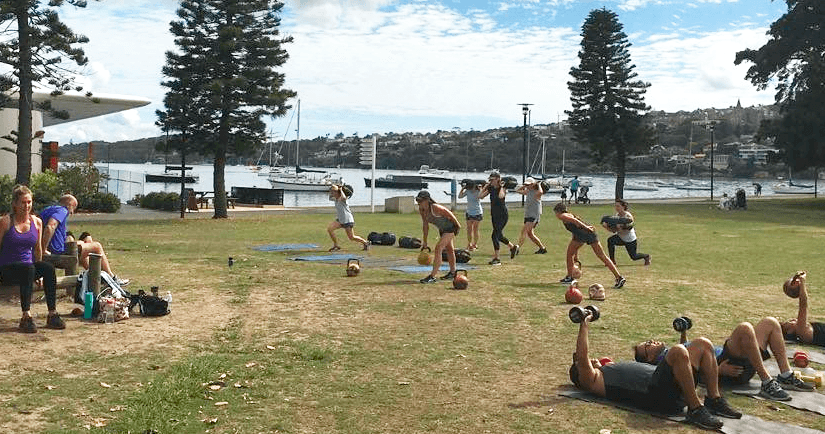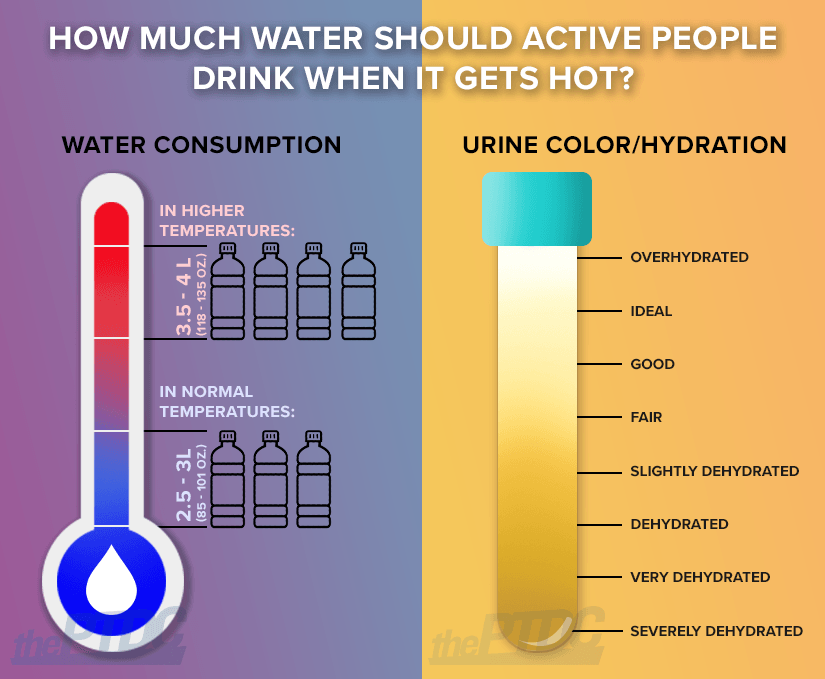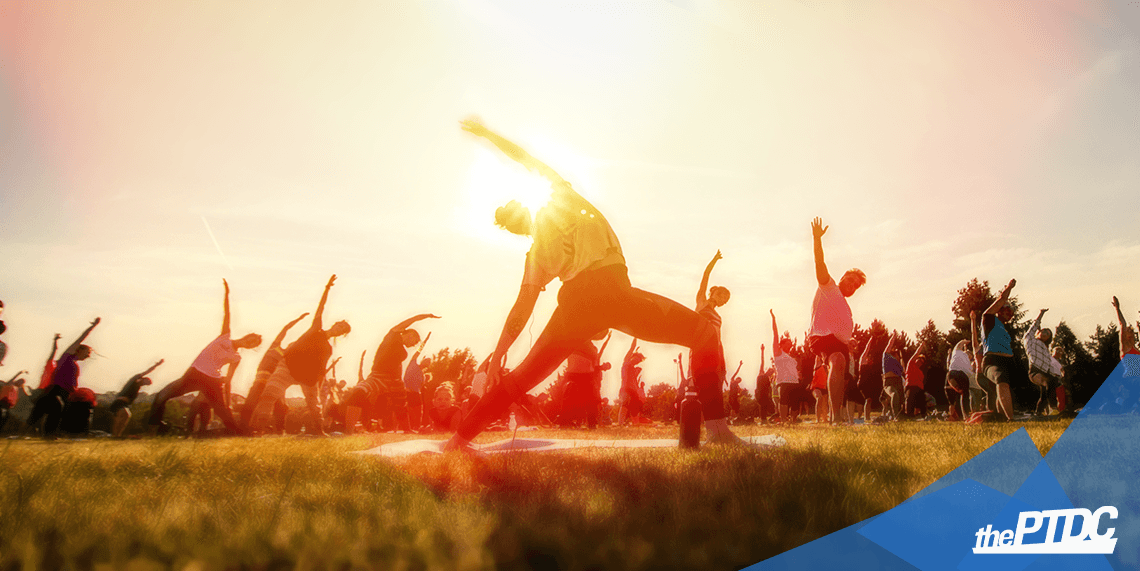My wife, Mel, and I run outdoor boot camps in six locations in Sydney, Australia. We’re out in the elements all the time, and we’ve learned a few things about keeping clients safe working out in the heat.
No, we don’t have to worry about poisonous snakes, giant spiders, or rabid dingoes. But summers down here can be pretty extreme.
Our 2019-2020 bushfire season was so bad, it became known as Black Summer. Even in the city, it was like sitting by a campfire with the wind blowing smoke in your face.
We had to reduce the intensity of our classes by 40 to 50 percent and, in some cases, cancel them entirely.
As personal trainers, we have a duty to protect our clients.
Summer brings special hazards your clients might not be prepared for, especially if they’re beginners.
As a responsible trainer, you’ll want to know a few important tips for working out in the heat.

1. Know your client’s underlying medical conditions
When you’re doing your preliminary assessment of new clients, ask if they have:
- Allergies
- Asthma
- Heart disease
- Or any other condition that can be aggravated by heat and humidity
If they do, keep that in mind when writing their summer training programs.
If someone hasn’t been exercising at all, take it extra easy. You don’t want anyone passing out.
In fact, it’s probably smart to reduce the overall intensity of the workouts you prescribe by 10 to 20 percent during summer’s hottest times.
Or, when particularly warm conditions are forecast, remind them before they start to train to take it easier that day.
2. Monitor these three indexes
Heat Index
The Heat Index combines air temperature and relative humidity to provide a quick assessment of how warm it’s going to feel outside in the shade.
Most weather forecasts include this measure and warn when it’s excessively high—caution is recommended above 27 degrees Celsius (80 degrees Fahrenheit); and 41 degrees Celsius (106 degrees Fahrenheit) or higher is considered dangerous.
You can also calculate the heat index in your area using air temperature and relative humidity.
Air Quality Index
Likewise, the Air Quality Index supplies a quick snapshot of the pollution level in your area.
Standards can vary, but on days when the air quality is deemed unhealthy, as it was during our bushfires, consider cutting back on workout intensity, moving indoors, or postponing the session, especially if clients have respiratory conditions.
You can use AccuWeather to find the Air Quality forecast in your local area.
UV Index
A measure of the strength of the ultraviolet radiation in the atmosphere, the UV Index indicates how much protection is needed for exposed skin under the forecasted conditions.
It, too, is usually called out in most weather forecasts. You can also use WeatherOnline to look up the UV Index where you are.
3. Get your clients up early
Early-morning training is ideal because those previously mentioned indexes are generally at lower, safer levels.
All our outdoor classes are held early-morning and in the shade.
4. Keep ’em hydrated
Adults should normally be drinking 2.5 to 3 liters (85 to 101 ounces) of water daily.
As their activity level and the temperature rises, so should their fluid consumption, to 3.5 to 4 liters (118 to 135 ounces) daily.
During our 40-minute sessions, we encourage clients to sip water regularly and consume about 700 milliliters (24 ounces) in total. (Tip: Bring a few extra bottles of water to group workouts in the heat in case anyone forgets to bring theirs.)
Since most of us have better things to do than track our drinking, I just tell them to look at the color of their pee. If it’s pale or transparent yellow, they’re drinking enough. If it’s smelly and dark, they’re not.
Note: If urine is completely colorless, that could indicate overhydration, which can happen when people, particularly athletes, drink excessive water to avoid dehydration. Overhydration can lead to low sodium levels in the blood, though it’s unlikely to occur in those with normal functioning kidneys.

We get a lot of questions about energy drinks, but because most of our clients are women who want to lose weight and are exercising for less than an hour, we don’t recommend them. (We like our clients to get calories from real foods.)
Anyone who is concerned about keeping their electrolyte levels up and avoiding heat cramps can just put a pinch of salt in their water bottle or eat a banana beforehand.
5. Tell ’em to go easy on the booze and beans
Too much alcohol the night before a training session will dehydrate the body and make working out in the heat feel even harder. Warn your clients about that.
Also, they shouldn’t be knocking back a couple of espressos or an extra-large coffee beforehand. Too much caffeine (and sugar) can raise blood pressure and promote heart palpitations.
A cup of regular coffee preworkout is fine to get them going in the morning, but suggest they save the high-octane jolt for a reward afterward.
6. Stress sun protection
There are four components to emphasize with clients:
1. Sunscreen
We actually provide this for free in our outdoor classes. That’s because people invariably forget to put it on at home.
I use an oil-free, water-/sweat-resistant, and fragrance-free brand with an SPF 30. I personally prefer the spray because it goes on quickly and evenly.
2. Sun hat
Most of our clients wear peaked hats, and that’s better than nothing. But when it’s really hot, clients (and trainers) should wear one with a surrounding brim that shades the ears and face. The classic Australian hat is the akubra and, no, it’s not overkill.

3. Sun sleeves
Most people don’t like wearing long-sleeve shirts while working out in the heat, so sun sleeves are a good alternative.
These are made of lightweight, stretchy fabric that protects your arms without feeling hot or uncomfortable.
They come in lots of fun colors and patterns. Just be sure to recommend the ones with UPF 50 protection.
4. Sunglasses
Function is more important than style when it comes to sports sunglasses.
Necessary features include polarized lenses to reduce glare, full UVA/B protection, and enough frame coverage to fully shield the eyes. (These BNUS sunglasses, $67, meet that criteria.)
7. Be prepared for emergencies
It can’t hurt to suggest that clients keep a first-aid kit in their car or gym bag. We have one available at all our classes. Band-Aids and ice packs always come in handy.
And if the heat does get the better of someone, even something as simple as a cool damp rag laid across the back of the neck can help reduce body temperature and quickly revive them. Suggest keeping one in a small portable cooler with their water bottle.
8. Thwart the animal world
Dogs
If you’re running or hiking, it’s best to stop and let the dog sniff you and realize you’re not a threat (or at least buy some time until the owner shows up).
If you’re cycling, hopefully you’ll have been training enough to out-pedal the dog.
Snakes
If a snake bites, try to keep your wits and take a photo of the snake. This will help emergency-room personnel decide what anti-venom, if any, is required.
Insects
Mosquitos, flies, ticks … they’re all out in force in summer. Experiment with different repellants and recommend those you think work best.
If a client is allergic to bee stings, make sure they’re carrying an EpiPen in their first-aid kit.
9. Check the ground before getting down
In Australia we have bindi patches in our parks. These consist of weedy plants with tiny sharp needles that can be really annoying and painful if you happen to do a pushup on them.
So always advise clients who are exercising outside to take a close look at the patch of earth they’re standing on.
Make sure there are no ants, nests, or poisonous plants in the area, even if they’re using a mat.
10. Make ’em aware of this common cause of cycling dehydration
When someone is riding a bike and moving along at a nice clip, the airflow across their body evaporates sweat and cools the skin.
Although this is a great way to beat the summer heat, it can lead to rapid dehydration because they won’t feel hot or sweat noticeably.
To stay hydrated, tell clients to slug from their water bottle every 10 to 15 minutes regardless of whether or not they’re thirsty.
11. Warn clients about swimming
Swimming is a great way to stay cool and fit in summer, but unfortunately it’s also the time of year when bacteria can thrive in lakes and beach areas.
If you’re training a swimmer, keep an eye on water quality or, at the very least, encourage them to keep their mouth shut as much as possible while doing their yardage.











